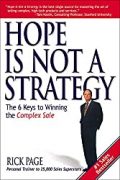
Rating: 7.8/10.
Book about the creation and growth of Instagram, one of the largest social networks based on photo sharing. Instagram was founded by Kevin Systrom and Mike Krieger in 2010. Systrom had an interest in photography and wanted to appeal to users’ desire to look good, so the app provided filters that improved low-quality cell phone photos. The app took off quickly, especially after Justin Bieber and other celebrities signed up in 2011.
Less than two years after launch, and a week after raising a $500M funding round, Facebook acquired Instagram for $1B in 2012. Systrom decided to sell because the team was too small to handle the massive amount of traffic, and Facebook promised to allow them to keep being mostly independent as a startup within the larger company. Facebook tried to acquire other competitors as well: WhatsApp was acquired in 2014; Snapchat was offered an acquisition but refused to sell.
Instagram took a quite different approach towards content and advertising, compared to Facebook. Instagram preferred to curate posts manually as much as possible, and make deals directly with celebrities, while Facebook liked to do everything algorithmically, which would be more scalable. For a while, Systrom personally vetted every ad to conform to his aesthetic standards. In the initial years after acquisition, Instagram focused on growth and was not concerned with revenue until much later.
As the platform matured, people felt there was a high bar to post only the most perfect photos, so they posted less frequently. This was a use case that Snapchat did well (posts that were short-lived so they had a much lower bar), and both Instagram and Facebook eventually copied this “stories” feature. Facebook was in general decline as it had a poor reputation for privacy, fake news, etc, but Instagram was largely unaffected. Despite owning Instagram, Zuckerberg was unhappy about it overtaking his main social network, and took steps to prevent this.
The book ends with the resignation of Systrom and Krieger in 2018, six years after being acquired by Facebook. The team felt that they had an adversarial relationship with Facebook who actively tried to limit Instagram’s growth and denied them resources. By then, Instagram had over a billion users, and it was no longer a small and friendly social network — people were willing to go to great lengths to optimize their follower count as it came with great monetary and status rewards.
Overall, an insightful look behind the scenes of two of the largest social networks in the world. Once the amount of content grows too large for human curation, there are difficult questions of how to moderate it fairly. Zuckerberg has a fierce acquire-or-kill mentality towards competing social networks, and in this case, Instagram got acquired very early on, and for most of its lifecycle it operated as a semi-independent entity within Facebook. It’s hard to say what would’ve happened if they held off the acquisition for longer, but you definitely lose a lot of control once you sell your startup.



